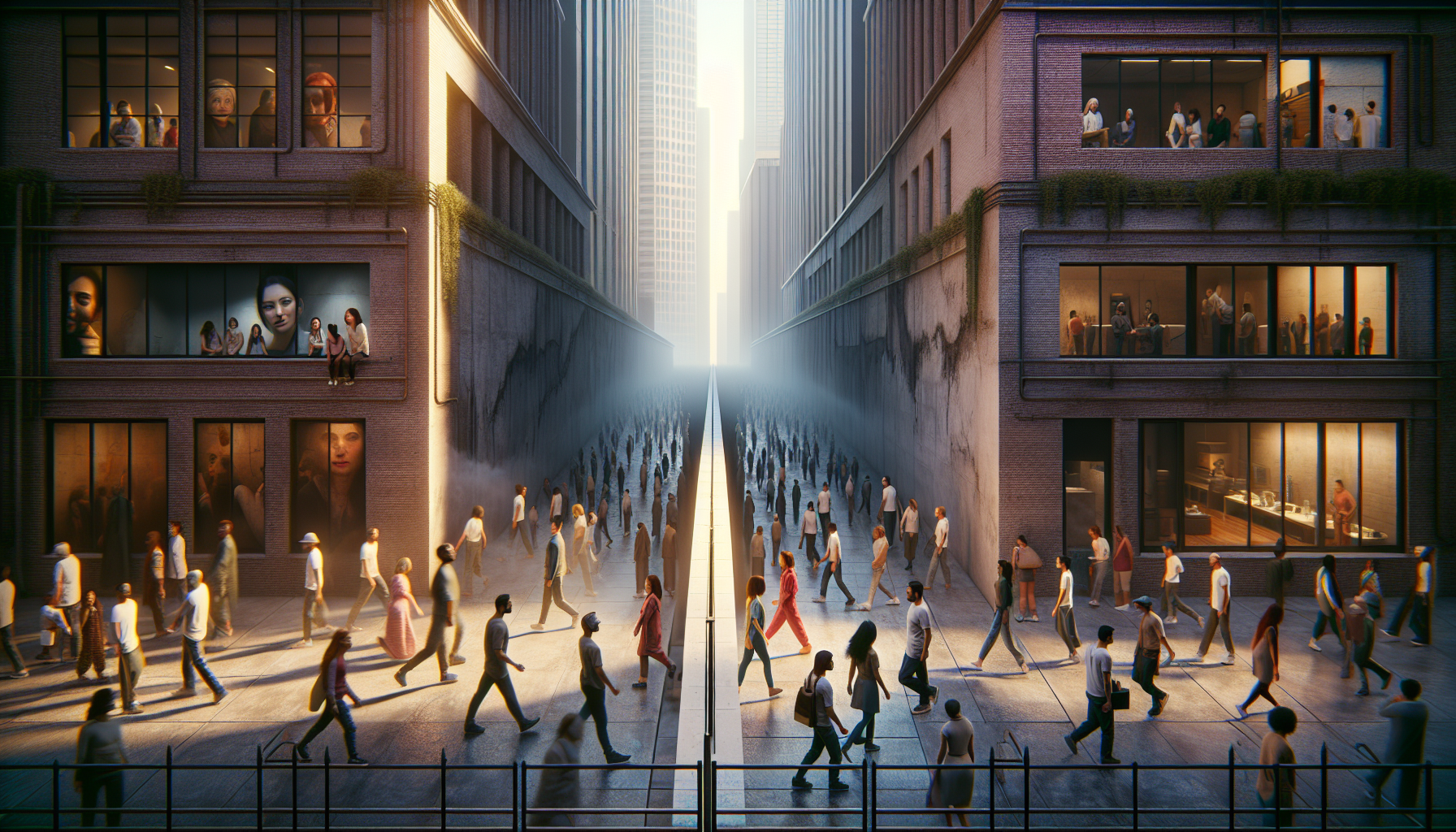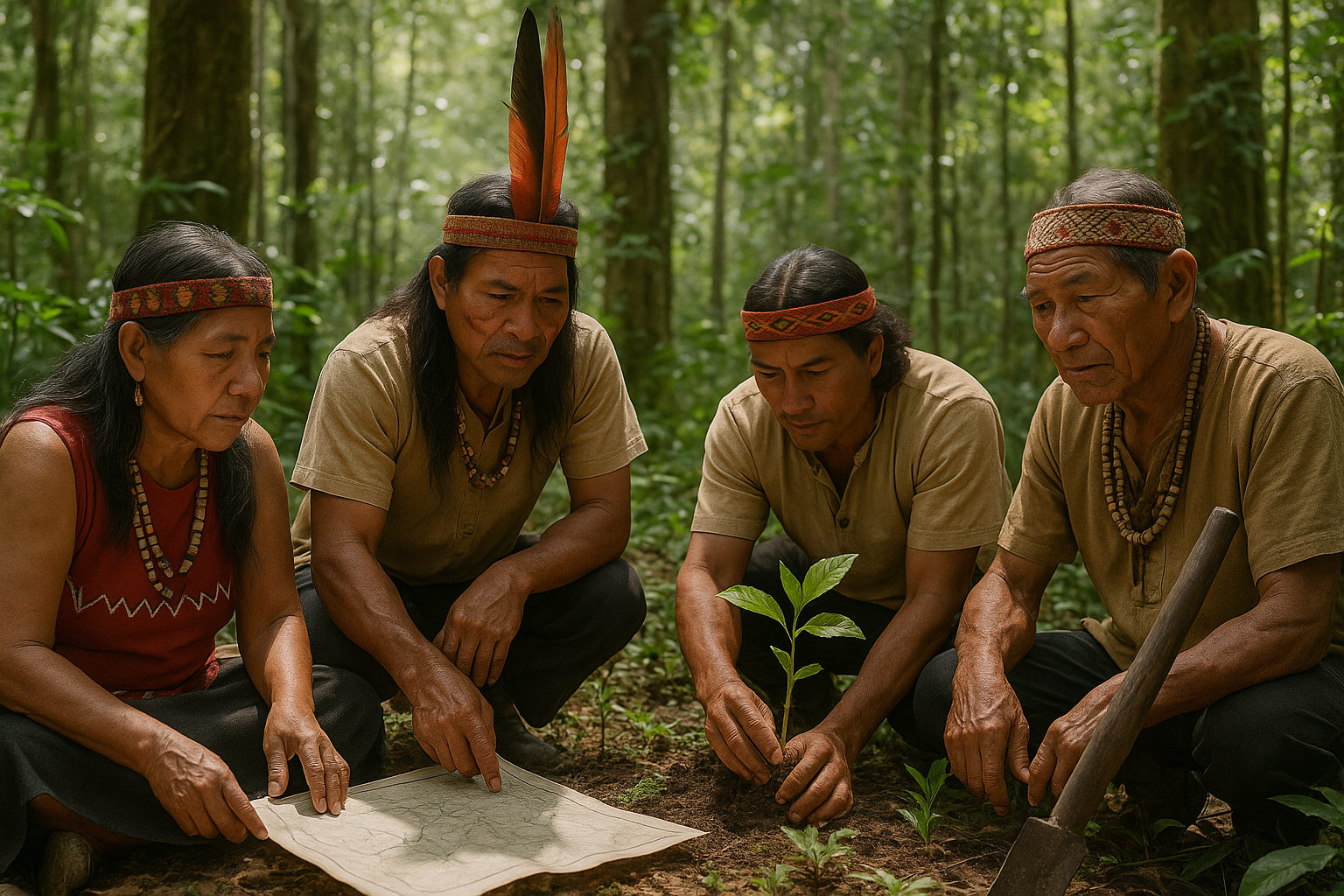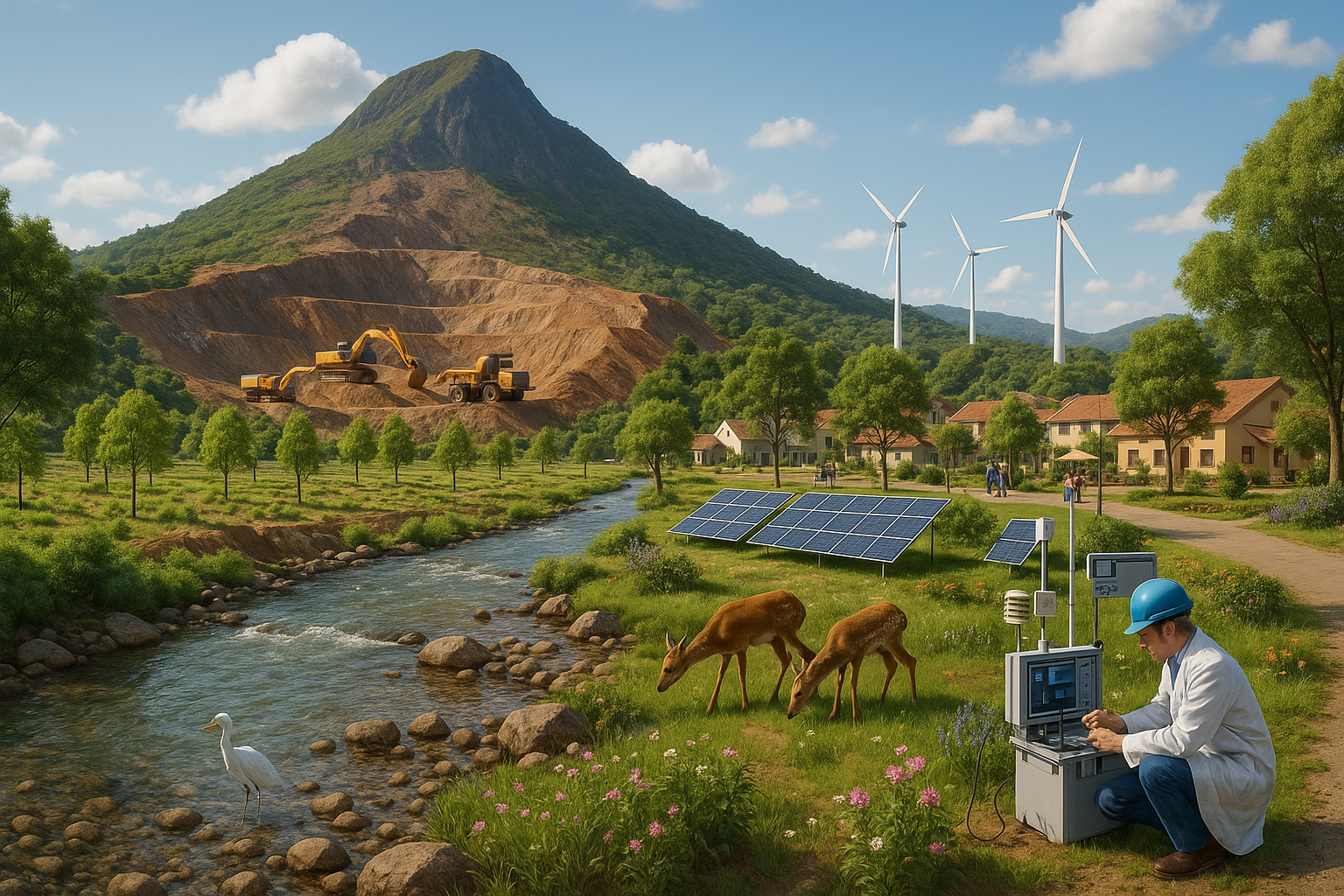In a world bustling with technological advancements and societal progress, it is easy to assume that barriers are steadily being dismantled, paving the way for a more connected and inclusive global community. However, beneath the surface of our apparent unity lie the invisible walls that continue to divide us—walls not constructed of bricks and mortar, but of prejudice, misunderstanding, and unseen biases. These intangible barriers shape our interactions, influence our perceptions, and often, unbeknownst to us, determine the course of our lives. 🌍✨
Invisible walls are the silent forces that segregate communities, perpetuate stereotypes, and fuel social inequities. Unlike physical barriers, these walls are insidious, often deeply embedded in the fabric of our culture and consciousness, making them difficult to recognize and even harder to dismantle. They manifest in various forms—be it the unspoken norms that dictate gender roles, the implicit racial biases that affect our judgments, or the socioeconomic divides that hinder equal opportunities. These invisible walls create real tensions, affecting both individual lives and societal structures in profound ways.
In this exploration of the unseen, we delve into the origins of these invisible barriers, tracing how historical contexts and cultural narratives have woven them into the very essence of our societies. We will examine the psychological underpinnings that sustain these walls, drawing on insights from social psychology and behavioral science to understand why they persist despite our conscious efforts towards equity and inclusion. By dissecting the intricate web of implicit biases and systemic inequalities, we aim to reveal the hidden mechanisms that keep these walls standing.
Moreover, this journey will shine a light on the real-world implications of these invisible barriers. From the workplace to our personal lives, the presence of unseen walls affects decision-making, limits personal growth, and perpetuates cycles of disadvantage. We will hear from individuals whose lives have been shaped by these unseen forces, providing a human face to the abstract concept of invisible barriers. Their stories will underscore the urgency of addressing these issues, highlighting the transformative power of awareness and empathy in breaking down these walls.
Finally, we will explore actionable strategies to begin dismantling these invisible barriers. By drawing on successful case studies and expert recommendations, we will identify practical steps individuals and organizations can take to foster inclusivity and equality. From promoting diverse narratives in media to implementing bias training programs, we will outline how small, intentional actions can lead to meaningful change. Together, let’s embark on this journey to uncover the unseen, challenge the status quo, and build bridges over the invisible walls that divide us. 💪🏼🤝
The Concept of Invisible Walls
In the vast realm of sociology and psychology, the term “invisible walls” refers to the unseen barriers that exist within societies, organizations, and even individual psyches. These are not physical barriers, but rather, they are mental, emotional, and social constructs that limit interactions and growth. Invisible walls can manifest in various forms, such as cultural norms, stereotypes, and prejudices that subtly dictate behaviors and attitudes. They are the unspoken rules and expectations that can shape individual experiences and influence societal dynamics.
To truly grasp the concept of invisible walls, one must delve into their origins and understand how they form. Often, these walls are the result of historical events, long-standing traditions, or entrenched ideologies that have been passed down through generations. They are reinforced by social conditioning, where individuals learn to conform to certain expectations and norms. These barriers are pervasive, affecting everything from interpersonal relationships to broader societal interactions, and they can be incredibly difficult to dismantle due to their subtlety and deep-rooted nature.
While invisible walls can be restrictive, they also play a role in maintaining social order. They provide a framework within which societies operate, offering guidelines for acceptable behavior. However, when these walls become too rigid, they can stifle innovation, prevent diversity, and create divisions. Understanding the balance between maintaining necessary social structures and breaking down harmful barriers is crucial for fostering an inclusive and progressive society. To gain deeper insights into this complex topic, watch the video titled “Breaking Down Invisible Barriers” on the Psychology Channel.
Types of Invisible Walls and Their Impacts
Societal and Cultural Walls
Societal and cultural walls are among the most prevalent forms of invisible barriers. These walls often arise from cultural norms and societal expectations that dictate how individuals should behave, interact, and even think. They can influence everything from career choices to personal relationships. For example, gender roles are a classic example of cultural walls, where individuals are expected to conform to specific behaviors and responsibilities based on their gender. These expectations can limit personal growth and perpetuate inequality.
Another significant aspect of societal walls is the impact of stereotypes and prejudices. These are preconceived notions about certain groups that can lead to discrimination and exclusion. For instance, racial and ethnic stereotypes can create divisions within communities, leading to social stratification and tension. Such walls are often perpetuated by media portrayals and societal narratives, which can reinforce negative perceptions and hinder efforts toward inclusivity and diversity.
To understand the impact of societal and cultural walls, it’s essential to consider the ripple effects they create. These walls can affect economic opportunities, access to education, and even health outcomes. For instance, individuals from marginalized communities may face barriers to education and employment due to societal prejudices, limiting their ability to achieve their full potential. To explore further, check out the video titled “Cultural Barriers in Modern Society” on the Sociology Insights channel.
Psychological and Emotional Walls
Invisible walls also exist on a psychological level, often manifesting as self-imposed barriers that hinder personal growth and fulfillment. These psychological walls are the result of internalized beliefs and fears that limit individuals’ perceptions of what they can achieve. Common examples include impostor syndrome, fear of failure, and negative self-talk, all of which can prevent individuals from pursuing their goals and realizing their potential.
Emotional walls, on the other hand, are defenses that individuals build to protect themselves from perceived threats. These walls can manifest as emotional detachment, reluctance to trust others, or avoidance of vulnerability. While they may provide temporary protection, emotional walls can also prevent meaningful connections and hinder personal relationships. Understanding and overcoming these psychological and emotional barriers is essential for personal development and emotional well-being.
The process of breaking down psychological and emotional walls involves self-awareness and a willingness to challenge internalized beliefs. It requires individuals to confront their fears and insecurities and embrace vulnerability as a strength rather than a weakness. For practical strategies on overcoming these barriers, consider watching the video titled “Overcoming Self-Imposed Barriers” on the Mental Health Channel.
Strategies for Overcoming Invisible Walls
Addressing and dismantling invisible walls requires a multi-faceted approach that involves both individual and collective efforts. Here are some strategies that can help break down these barriers:
- Education and Awareness: Raising awareness about the existence and impact of invisible walls is a critical first step. Education can help individuals recognize these barriers and understand their effects on society. This involves promoting critical thinking and encouraging open discussions about stereotypes, prejudices, and cultural norms.
- Promoting Inclusivity and Diversity: Encouraging diversity in various sectors, such as the workplace and education, can help dismantle societal walls. Inclusivity initiatives should focus on creating environments where individuals from different backgrounds feel valued and respected.
- Encouraging Open Dialogue: Fostering open and honest conversations about invisible walls can lead to greater understanding and empathy. Dialogue should involve active listening and a willingness to challenge preconceived notions and biases.
Implementing these strategies requires commitment and collaboration from individuals, organizations, and communities. By working together, it is possible to create a society where invisible walls no longer hinder progress and where everyone has the opportunity to thrive. For more insights into these strategies, watch the video titled “Strategies for Inclusive Societies” on the Social Progress Channel.
The Role of Technology in Breaking Down Invisible Walls
In today’s digital age, technology plays a significant role in addressing invisible walls. The internet and social media platforms have made it easier to connect with individuals from diverse backgrounds and share different perspectives. This global connectivity can help break down cultural and societal barriers by promoting understanding and empathy among people from different walks of life.
Moreover, technology can facilitate education and awareness by providing access to information and resources that challenge stereotypes and prejudices. Online platforms can serve as spaces for learning and dialogue, where individuals can engage with content that broadens their horizons and encourages critical thinking. Additionally, technology can support inclusivity initiatives by providing tools for remote work and learning, enabling greater participation from individuals who may face physical or geographical barriers.
However, it’s important to recognize that technology can also perpetuate invisible walls if not used responsibly. Online spaces can become echo chambers where biases are reinforced, and misinformation can spread. Therefore, it is crucial to promote digital literacy and encourage the responsible use of technology to ensure that it serves as a tool for breaking down barriers rather than reinforcing them.
To explore the impact of technology on invisible walls further, watch the video titled “Technology and Social Barriers” on the Tech for Good channel.
| Type of Invisible Wall | Impact | Strategies to Overcome |
|---|---|---|
| Societal and Cultural Walls | Limit personal growth, perpetuate inequality | Education, inclusivity initiatives, open dialogue |
| Psychological and Emotional Walls | Hinder personal development, affect relationships | Self-awareness, challenging internalized beliefs |

Conclusion
Conclusion: Uncovering the Unseen: Exploring the Real Tensions of Invisible Walls
Throughout our exploration of “Uncovering the Unseen: Exploring the Real Tensions of Invisible Walls,” we have delved deep into the often-overlooked barriers that silently shape our lives. These invisible walls, though intangible, have profound implications on individual experiences and societal dynamics. Our discussion highlighted the multifaceted nature of these barriers, ranging from social and psychological constructs to institutional and systemic biases. Each section of the article unraveled a layer of these invisible barriers, revealing how they manifest in different environments and affect diverse populations.
We began by examining the social constructs that create invisible walls between individuals and groups. These constructs often stem from stereotypes, prejudices, and cultural norms that perpetuate division and hinder social cohesion. The psychological impact of these barriers can lead to feelings of isolation, marginalization, and decreased self-worth among those affected. This section emphasized the importance of awareness and empathy in breaking down these barriers, advocating for a society that values diversity and inclusivity.
The article then transitioned to exploring institutional and systemic barriers, which are often embedded within educational, professional, and governmental structures. These invisible walls manifest in practices and policies that inadvertently disadvantage certain groups, perpetuating cycles of inequality and limiting opportunities. By highlighting real-world examples and research findings, we underscored the necessity for systemic change and proactive measures to dismantle these barriers. This includes advocating for equitable policies, promoting diversity in leadership, and ensuring equal access to resources and opportunities for all.
In addressing these issues, the importance of education and awareness was consistently reinforced. Knowledge empowers individuals to recognize and challenge invisible walls, fostering environments where open dialogue and mutual understanding can thrive. Encouraging educational institutions and organizations to prioritize cultural competence and inclusivity training can pave the way for transformative change. This approach not only benefits marginalized groups but enriches society as a whole by harnessing the diverse perspectives and talents of all its members.
Our exploration also touched upon the personal responsibility each of us holds in breaking down invisible walls. By fostering environments of empathy and openness in our personal and professional lives, we contribute to the gradual erosion of these barriers. Simple acts of kindness, active listening, and the willingness to challenge our own biases can collectively create ripple effects that transcend individual interactions, promoting a culture of inclusivity and respect.
As we conclude this journey through the unseen tensions of invisible walls, it is crucial to recognize that while progress has been made, the work is far from over. The path to dismantling these barriers requires continuous effort, reflection, and collaboration across all sectors of society. By engaging in open conversations, sharing experiences, and supporting initiatives that promote equality and justice, we can collectively work towards a future where invisible walls are no longer a hindrance.
We invite you, the reader, to reflect on the invisible walls you may encounter or perpetuate in your own life. How can you contribute to their dismantling? Whether through education, advocacy, or simple acts of kindness, your actions have the power to inspire change. Share your thoughts and experiences in the comments section below. Let us create a dialogue that transcends barriers and fosters understanding and unity.
Furthermore, consider sharing this article with your network. By spreading awareness and encouraging others to explore these issues, we can amplify the impact of our efforts and inspire collective action. Together, we can uncover the unseen, challenge the status quo, and build a world that embraces diversity and inclusivity in all its forms. 🌎
For further reading and resources on dismantling invisible barriers, you can explore the following links:
1. Understanding and Dismantling Racism: The Twenty-First Century Challenge to White America
2.
3.
By engaging with these materials, you can deepen your understanding and equip yourself with the tools needed to make a meaningful impact. Thank you for joining us on this exploration of the unseen tensions that shape our world. Together, we can work towards a future free from invisible walls, where everyone has the opportunity to thrive.
Toni Santos is a visual storyteller and artisan whose creations celebrate the poetry of the natural world. Through his thoughtful artistic lens, Toni captures the elegance of botanical forms, transforming them into meaningful expressions of symbolism, resilience, and timeless beauty.
His journey is deeply rooted in a passion for flora and the mysteries they carry. From the shape of a petal to the curve of a vine, each design Toni brings to life reflects a deeper narrative — one of growth, transformation, and harmony with nature. Whether crafting symbolic floral jewelry, enchanted botanical illustrations, or seasonal visual studies, Toni’s work evokes the quiet magic found in Earth’s most delicate details.
With a background in handcrafted artistry and visual design, Toni blends technique with intention. His creations do more than decorate — they speak, often inspired by ancient meanings behind flowers, the cycles of the seasons, and the invisible bonds between nature and spirit.
As the creative voice behind Vizovex, Toni shares this botanical journey with the world, offering curated stories, handcrafted collections, and thoughtful articles that help others reconnect with nature’s symbolism and artistic essence.
His work is a tribute to:
The quiet power of flowers and their messages
The art of visual symbolism in everyday life
The beauty of slowing down to see what’s hidden in plain sight
Whether you’re an artist, a nature lover, or someone drawn to the deeper meanings behind the natural world, Toni welcomes you to explore a space where aesthetics meet soul — one petal, one story, one creation at a time.





